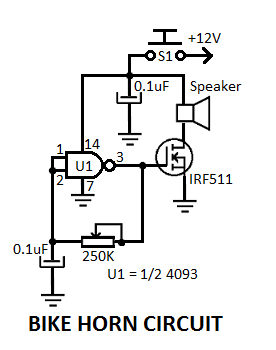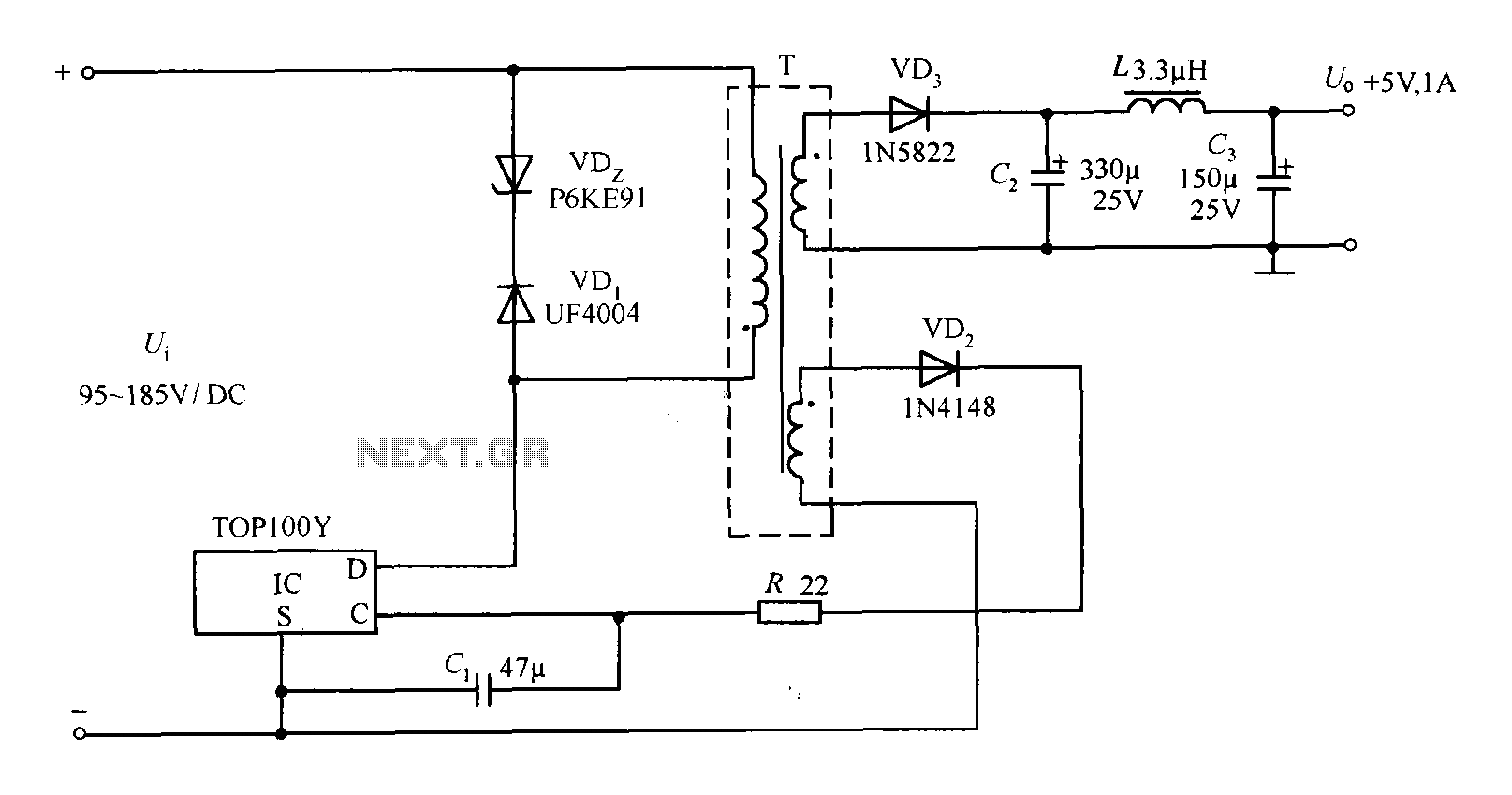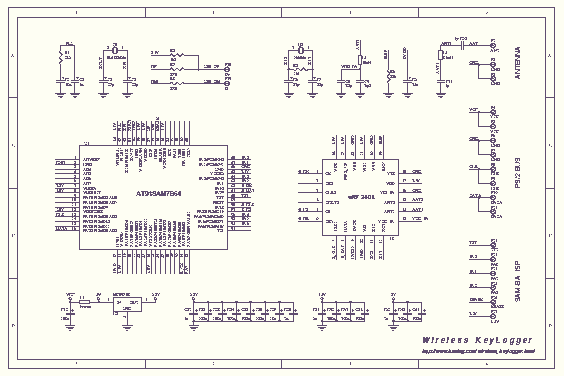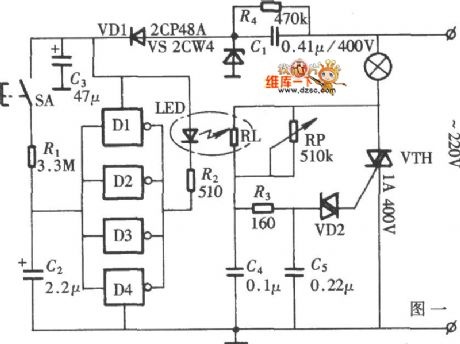
Electronic Bicycle Horn Circuit

This simple electronic bicycle horn circuit utilizes a single gate from a 4093 quad 2-input NAND Schmitt trigger (U1) connected in a straightforward, low-frequency square wave configuration.
The electronic bicycle horn circuit operates by generating a square wave signal that produces an audible sound when activated. The core component, U1, is a Schmitt trigger which provides hysteresis, ensuring that the output transitions cleanly between high and low states, thus generating a stable square wave.
The circuit typically includes a power supply, which can range from 5V to 15V, depending on the design requirements. The input to the NAND gate is connected to a resistor-capacitor (RC) network that determines the frequency of the oscillation. The values of the resistor (R) and capacitor (C) can be adjusted to fine-tune the frequency, allowing for a customizable tone.
When the circuit is powered, the Schmitt trigger oscillates, producing a square wave output that can drive a small speaker or piezo buzzer. The output is connected to the speaker, which converts the electrical signals into sound waves. The sound produced is typically loud enough to serve as a warning signal for pedestrians and other cyclists.
Additional components may include a switch to activate the horn, and possibly a diode to protect the circuit from back EMF if an inductive load is used. The simplicity of this circuit makes it an effective solution for bicycle horns, providing a reliable and audible alert mechanism while maintaining low power consumption.
Overall, the design is compact and efficient, making it suitable for integration into various types of bicycles without significant modifications.This simple electronic bicycle horn circuit uses only one gate of a 4093 quad 2-input NAND Schmitt trigger, U1, conected in a simple, low frequency, square.. 🔗 External reference
The electronic bicycle horn circuit operates by generating a square wave signal that produces an audible sound when activated. The core component, U1, is a Schmitt trigger which provides hysteresis, ensuring that the output transitions cleanly between high and low states, thus generating a stable square wave.
The circuit typically includes a power supply, which can range from 5V to 15V, depending on the design requirements. The input to the NAND gate is connected to a resistor-capacitor (RC) network that determines the frequency of the oscillation. The values of the resistor (R) and capacitor (C) can be adjusted to fine-tune the frequency, allowing for a customizable tone.
When the circuit is powered, the Schmitt trigger oscillates, producing a square wave output that can drive a small speaker or piezo buzzer. The output is connected to the speaker, which converts the electrical signals into sound waves. The sound produced is typically loud enough to serve as a warning signal for pedestrians and other cyclists.
Additional components may include a switch to activate the horn, and possibly a diode to protect the circuit from back EMF if an inductive load is used. The simplicity of this circuit makes it an effective solution for bicycle horns, providing a reliable and audible alert mechanism while maintaining low power consumption.
Overall, the design is compact and efficient, making it suitable for integration into various types of bicycles without significant modifications.This simple electronic bicycle horn circuit uses only one gate of a 4093 quad 2-input NAND Schmitt trigger, U1, conected in a simple, low frequency, square.. 🔗 External reference





